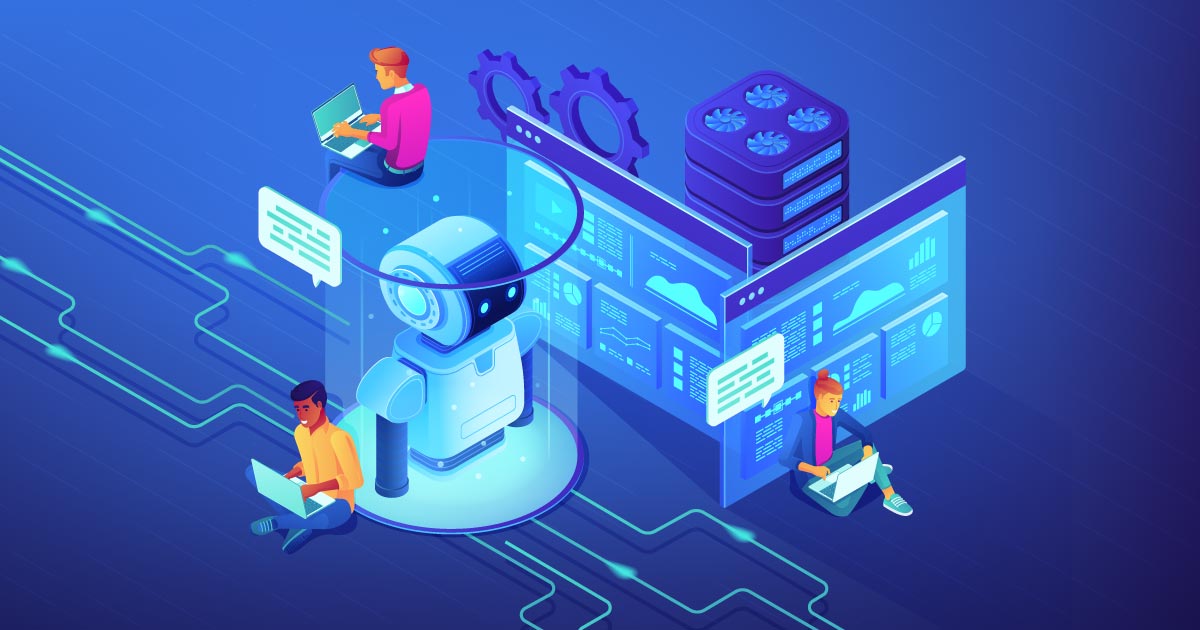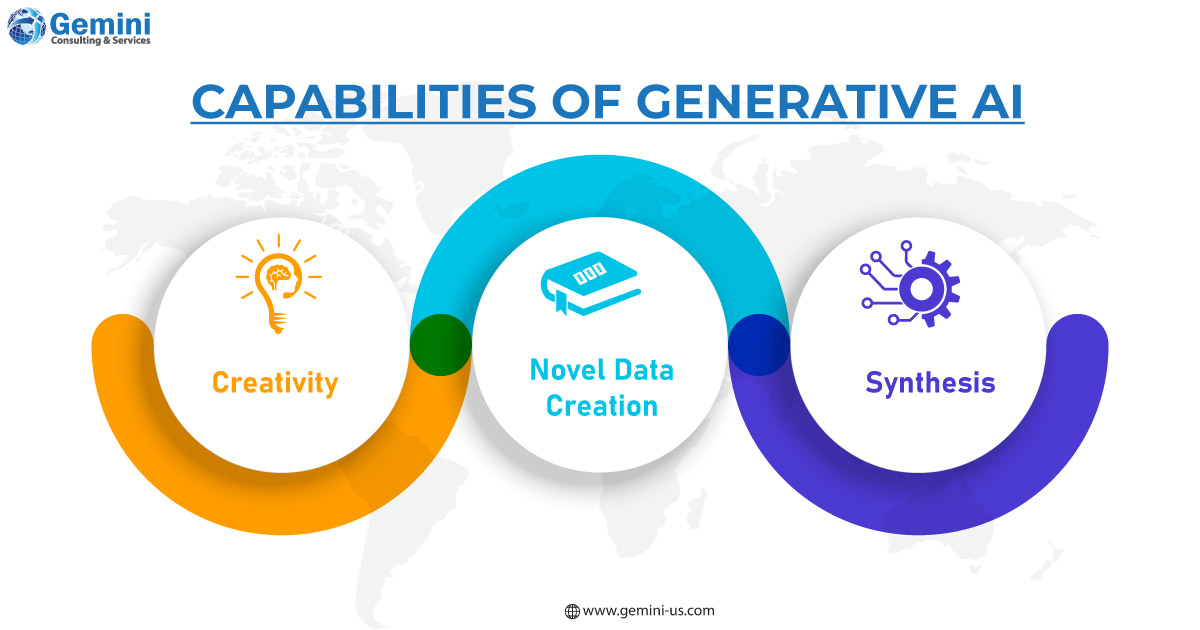In today’s data-driven tech landscape, Artificial Intelligence (AI) stands as a cornerstone of innovation, driving efficiency and progress across industries. However, navigating the diverse streams of AI requires a clear understanding of its various forms, such as generative AI and Machine Learning (ML).
Throwing around terms like AI, Gen AI, and ML without providing adequate explanation can leave clients feeling lost in a sea of jargon. To prevent this confusion, it’s crucial to define these terms clearly in roadmaps, announcements, and other business communications.
This blog aims to demystify these concepts, empowering enterprises to engage in more meaningful and productive conversations with their clients. Our objective here is to offer clarity on AI terminology so that we can bridge the gap between technological advancements and customer understanding.

Artificial Intelligence
Artificial Intelligence (AI) is a broad term encompassing the utilization of data and algorithms to enable computers to learn, reason, and perform tasks typically associated with human intelligence.
Within the area of AI, there exists Traditional AI, also known as Narrow or Weak AI, which is tailored to excel at specific tasks. These systems are designed to respond to predefined inputs, learn from data, and make decisions or predictions accordingly. They operate within a set framework like a skilled strategist navigating within established rules. Siri and Alexa that provide voice-based assistance, Google’s search algorithm and recommended list on Amazon and Netflix work on traditional AI. While proficient at their designated tasks, these systems are limited in their ability to innovate or generate novel outputs.
Key capabilities of AI encompass areas such as common-sense reasoning, which simulates human-like understanding and decision-making, bridging the gap between data-driven patterns and the nuanced judgment exercised by humans. Abstract thinking enables computers to tackle more intricate problem-solving tasks like workflow optimization and automation.
Gen AI and ML represent prominent branches of AI, each with distinct characteristics. While Gen AI and ML fall under the broader umbrella of AI, it’s important to recognize that not all AI systems belong to these categories exclusively. They each possess unique methodologies and applications, contributing to the diverse landscape of artificial intelligence.
Generative AI
Generative AI, often abbreviated as Gen AI, represents a specialized branch of artificial intelligence focused on processing extensive datasets, identifying patterns, and subsequently generating original works across various mediums, including text, imagery, video, and even computer code, based on provided instructions or prompts.
Harnessing artificial neural networks, which are similar to biological neural networks in processing information, Gen AI is inherently bound by the data used to train its models, resulting in all produced content being derived from this initial dataset.
The emergence of Gen AI owes much to its advancements in deep learning methodologies such as Generative Adversarial Networks (GANs) and Variational Autoencoders (VAEs). These techniques empower models to gain nuanced insights from vast datasets, culminating in the creation of remarkably realistic content.
The applications of Gen AI span across diverse industries, offering immense potential. For instance, in healthcare, abundant data comprising clinical notes, diagnostic images, and medical charts can be utilized by Gen AI to generate organized datasets or enhance existing structured datasets like insurance claims.
Considered the next evolutionary step in AI, Generative AI stands as a beacon of creativity, that functions like imaginative companion capable of producing original and innovative content. Trained on specific datasets, Generative AI models discern underlying patterns to generate new data reflective of the training corpus.
Prominent examples of Generative AI include GPT-4, developed by OpenAI, a language prediction model renowned for its capacity to generate coherent and contextually relevant text.

- Creativity: Enabling the generation of artistic creations, storytelling, music composition, and visual art.
- Novel Data Creation: Generating new data that are not present in the training set, facilitating the creation of synthetic data beneficial for various planning endeavors such as financial, workforce, supply chain, and treasury planning.
- Synthesis: Crafting new summaries, arguments, and perspectives by synthesizing information.
Distinguishing Generative AI from traditional AI lies in its expanded capabilities and applications. While traditional AI systems predominantly analyze data and make predictions, Generative AI surpasses this by generating novel data based on its training corpus.
As a leading provider of AI/ML solutions, Gemini Consulting & Services can help enterprises to leverage the power of data to improve productivity and efficiency. Contact us to know how our AI/ML experts can offer you a roadmap to success.
Machine Learning
Machine learning, a component of artificial intelligence, employs algorithms to examine data, glean insights, and formulate predictions and decisions. Rather than relying on explicit programming of rules, these algorithms autonomously refine their performance through experience. They scrutinize training data, utilizing statistical methods to unveil patterns, extract insights, and establish correlations between inputs and outputs. As fresh data is introduced, these algorithms continuously refine their predictive accuracy and analytical capabilities. Machine learning mimics human learning processes, tackling problems with vast datasets that would be arduous to program manually.
Supervised learning and unsupervised learning are the two primary types of learning algorithms. Supervised learning involves presenting the algorithm with inputs and corresponding outputs, facilitating the discovery of underlying rules. In contrast, unsupervised learning tasks the algorithm with unstructured data, allowing it to uncover relationships and patterns independently.

- Predictive Analytics: Foretelling outcomes based on historical data patterns, such as generating financial forecasts from past results.
- Anomaly Detection: Identifying irregularities or outliers in data, commonly employed in fraud detection or quality assurance.
- Recommendation Systems: Proposing products, content, or services based on user behavior and preferences.
- Regression Analysis: Assessing the strength of relationships between data, like analyzing the impact of advertising expenditure on potential revenue increases.
Contrasting Machine Learning with Generative AI
- Goal: While machine learning endeavors to discern patterns and make accurate predictions from existing data, generative AI focuses on producing new data resembling the training dataset.
- Training Techniques: Machine learning adopts various approaches, including supervised, unsupervised, and reinforcement learning. Generative AI predominantly employs techniques such as Generative Adversarial Networks (GANs) and Variational Autoencoders (VAEs), which involve dual-learning—generating data and critiquing it.
- Outputs: Machine learning offers insights as it can predict the relationships between data. It can also classify data. Generative AI on the other hand provides new assets that may include text, videos, images, or music.
- Performance Metrics: Machine learning models are assessed based on predictive accuracy metrics like precision and recall, while generative AI models are evaluated using qualitative measures, including realism, coherence, and diversity.



